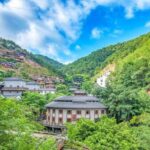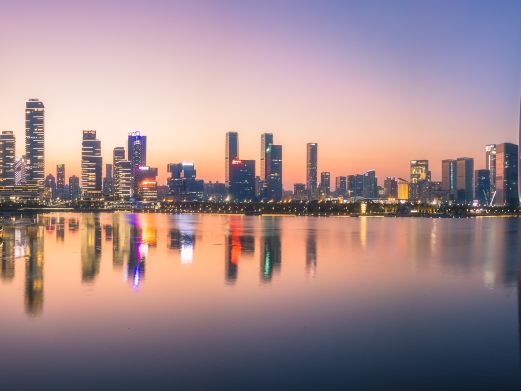The Banliang Ancient Village was built in the late Song Dynasty and early Yuan Dynasty and flourished in the Ming and Qing Dynasties. It has a history of more than 600 years. The whole village has the same surname and the same ancestry. They are descendants of Liu of Emperor Wu of Han. It is a typical clan settlement in southern Hunan. The entire ancient village covers an area of 3 square kilometers.
It is backed by Xiangling and extends flatly. It is built according to the mountain terrain and has a very large scale. The view in front of the village is wide. The small river flows down around the village. The three ancient ancestral halls are arranged in front of the village. The ancient post road passes through the village. The flagstone road connects the streets and alleys. There is a seven-story ancient pagoda in front of the village. There is an ancient stone bridge when entering the village. There are temples, pavilions, old private schools, ancient commercial streets and ancient banks in the village. The ancient village has small bridges and flowing water, winding paths leading to secluded places. The pagoda, ancient well and flagstone road are cleverly laid out. The strange stones and unique village are amazing. The ancient rural style has a unique charm. So far, more than 360 intact historical buildings of the Ming and Qing Dynasties are still preserved in the ancient village. These ancient dwellings that have survived thousands of disasters are all carved and painted, with upturned eaves and corners. Whether it is its terrazzo blue bricks, or the proper match between a family’s social status and the families seeking marriage, or its brick carvings, stone carvings and wood carvings, the craftsmanship is very exquisite and breathtaking. In short, the Banliang Ancient Village contains China’s ancient patriarchal ceremony, Confucian tradition, environmental concept, philosophical consciousness, architectural skills, ecological principles, etc. It is known as having a large scale, being relatively completely preserved, having superior geographical environment and profound cultural heritage.Opening hours: Open from 08:00 to 17:00 all year round.

Preferential policies:

Children: Children aged 14 (inclusive) to 18 (exclusive) with valid certificates can enjoy discounted tickets; children under 14 (exclusive) with valid certificates are free.









